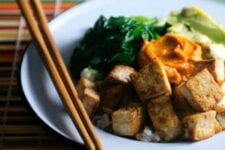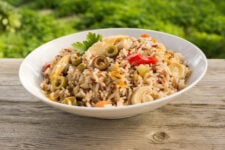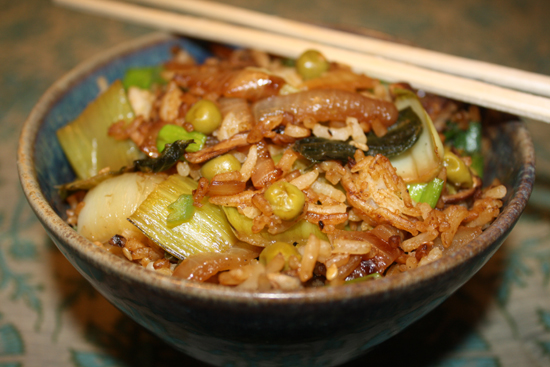Commonly served with Southeast Asian dishes such as curries and stir-fries, jasmine rice is a unique grain that provides a pleasant taste and fragrant aroma. It is easy to prepare, affordable, and available in multiple forms.
The unprocessed varieties contain numerous health benefits and are an excellent way to round out a nutritious meal due to their fiber and micronutrient content.
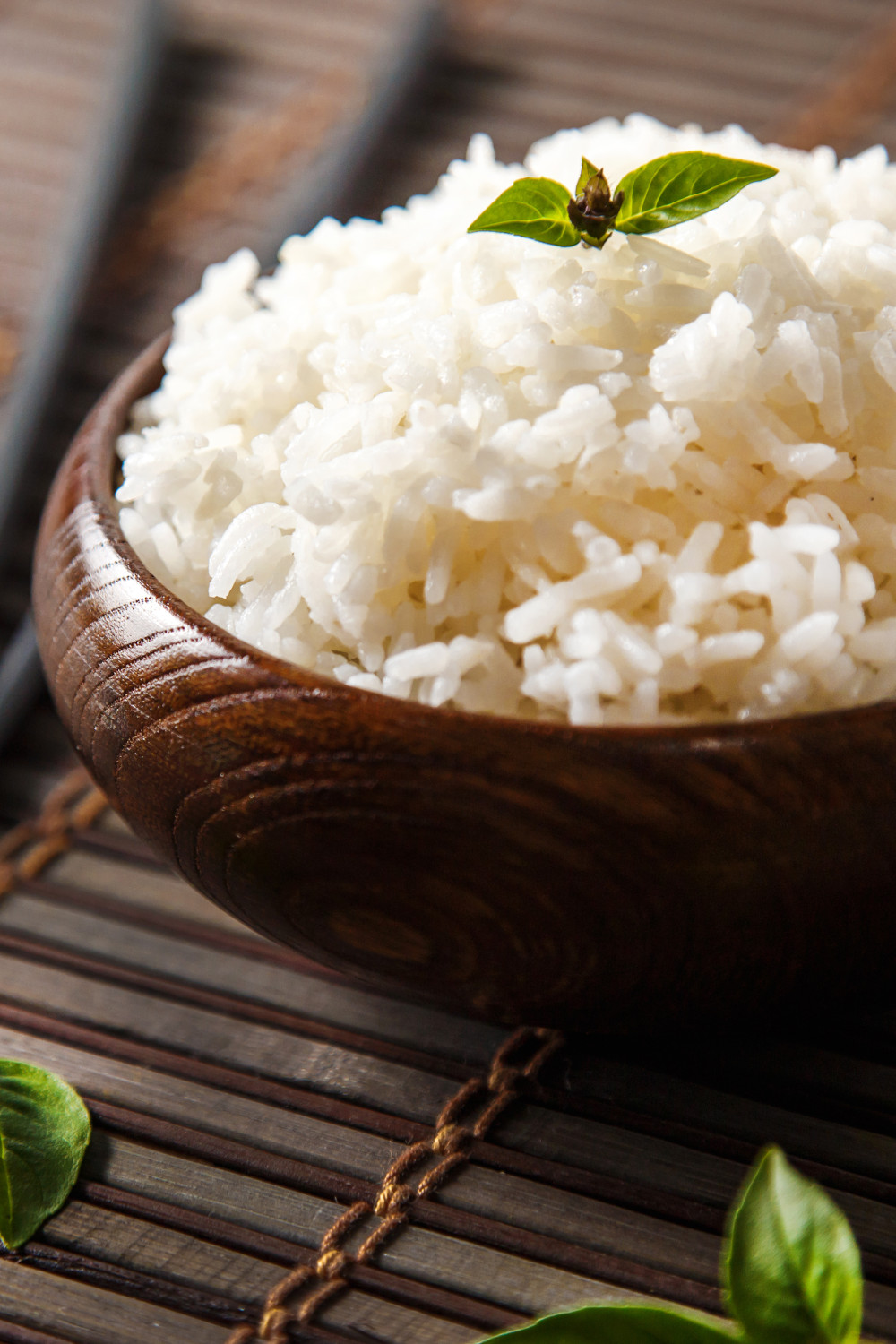
Continue reading to learn about the varieties of jasmine rice, their health benefits, and some of the downsides of including jasmine rice in the diet.
What is Jasmine rice?
Jasmine rice is a long-grain rice that is known for its aromatic properties. It is primarily grown in Thailand and is popular in Thai dishes due to its fragrance, nutty flavor, and fluffy texture. Jasmine rice is available in a few different forms:
- White jasmine rice: the most commonly found type
- Brown jasmine rice: an unprocessed, whole-grain form
- Red jasmine rice: a pigmented rice that is also a whole grain
Is Jasmine Rice Healthy?
White jasmine rice can be part of a healthy diet, particularly when paired with high-fiber foods such as fruits, vegetables, and legumes.
Jasmine rice is a low-fat food and contains a number of vitamins and minerals when fortified. However, white jasmine rice is not considered the most nutritious grain due to its low fiber content and lack of vitamins and minerals when not fortified.
Brown and red jasmine rice are healthier options because they contain more micronutrients (1, 2). Specifically, unprocessed jasmine rice has numerous health benefits as a whole grain, from being a good source of fiber and antioxidants to providing a moderate amount of iron.
Health Benefits of Jasmine Rice
Fiber and Blood Sugar
Fiber is important to consider when choosing which type of rice to eat, as fiber can help slow digestion and minimize spikes in blood sugar levels (3). White jasmine rice has very little fiber at 0.7 grams per 1/2 cup cooked (2).
When consuming white jasmine rice, it is important to include other high-fiber foods along with protein and fat in the meal to help balance the blood sugar response.
While brown jasmine rice contains a similar amount of total carbohydrates as white jasmine rice, it contains 4 grams of fiber per 1/2 cup cooked (1). This is a healthier choice, especially for people with diabetes and prediabetes.
High in Antioxidants
Pigmented Thai rice, also known as red jasmine rice, is known for its rich color and nutty flavor. It has been shown to contain more phytochemicals and antioxidants than white rice (4) due to its red pigment.
Food sources of antioxidants and phytochemicals have been shown to reduce the risk for a number of chronic diseases, including heart disease and cancer (5, 6).
Iron source
Iron is an important component of red blood cells and has numerous functions in the body, including supporting healthy energy levels (7).
Brown jasmine rice is a moderate iron source, with 1 cup of cooked rice containing 18% of the recommended iron intake for men, and 8% for women. White jasmine rice, on the other hand, only contains 6% of the iron RDA for men and 2% for women (1, 2, 7).
Which Type of Rice is the Healthiest?
There are numerous types of rice that have varying nutritional profiles and health benefits. Generally speaking, the whole, unprocessed forms of rice are the healthiest. White rice has been processed to remove the outer layer of the grain along with many of the nutrients (8).With the outer bran layer kept intact, brown rice is considered to be a whole grain. It contains more fiber, vitamins, and minerals (8).
Jasmine Rice vs White Rice
When compared to medium-grain white rice, jasmine rice is almost identical from a macronutrient standpoint. Both are considered refined grains and are low in fiber, and should be consumed in moderation in people who are watching their blood sugar levels (2, 10).
Jasmine Rice vs Basmati Rice
Jasmine rice and basmati rice are very similar in that they are both aromatic long-grain rice available in both brown and white varieties. They are nutritionally comparable in terms of macronutrients and fiber, but basmati rice does have a lower glycemic index, meaning it may result in less of a blood sugar spike (2, 11, 12).
Brown Jasmine Rice vs Brown Rice
Brown jasmine rice is nutritionally similar to long-grain brown rice with a few key differences. Brown jasmine rice is slightly higher in calories than brown rice, which may be a consideration for people watching their weight. However, jasmine rice does have almost 1.5 grams more fiber per serving than brown rice, which is a big positive. It also contains slightly more iron than brown rice (1, 13).
Studies show that replacing white rice with brown rice in the diet can reduce the risk of developing type 2 diabetes (9). Overall, brown jasmine rice and brown rice are both excellent choices for a balanced meal. Red jasmine rice is also classified as a whole grain and is a great choice as well.
Arsenic in Jasmine Rice
Many people have concerns about the arsenic levels in rice. Arsenic is a heavy metal that is toxic in high amounts and has been linked to elevated blood sugar and insulin levels (14). According to the FDA, rice can be safely consumed as part of a well-balanced diet in adults and does not need to be eliminated from the diet (15).
Most rice does contain arsenic due to how it is grown in paddies, but the levels can vary depending on where the rice is from (14). Jasmine rice does contain arsenic and is in fact higher in arsenic than basmati rice (14).
However, steps can be taken to reduce arsenic during the preparation of rice. The arsenic content of rice can be reduced by approximately 50% by cooking rice similarly to pasta (cooking with excess water and then draining the water afterward) (15).
Though rice is generally safe for adults to consume, infants and toddlers should consume a variety of other grains with rice in moderation to limit arsenic exposure (15).
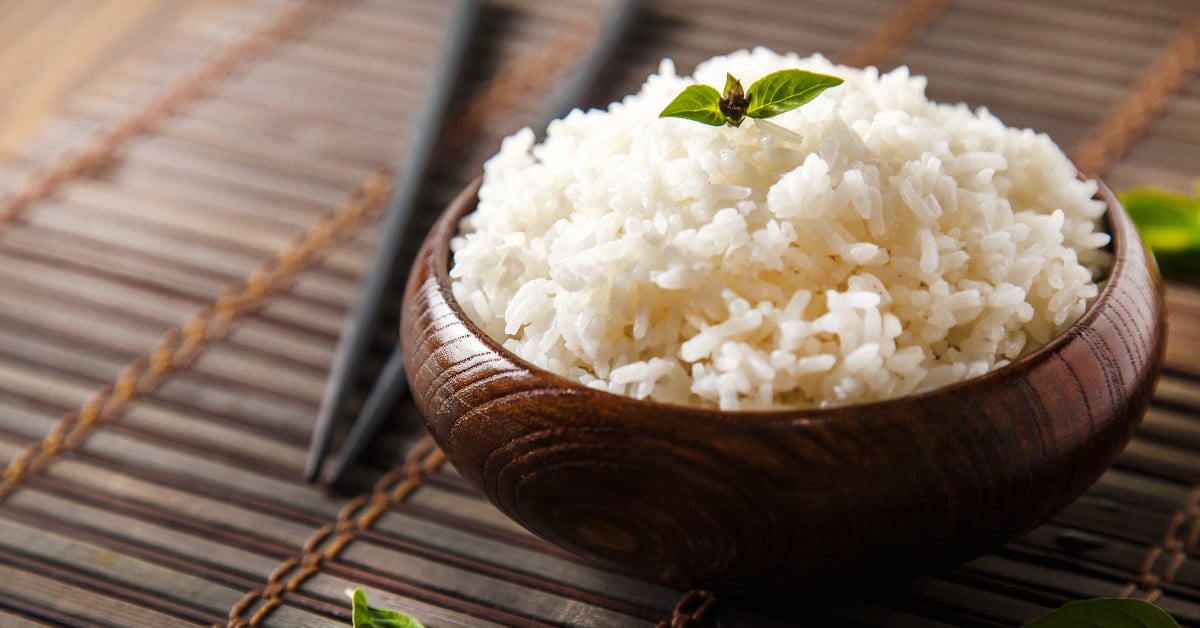
How to Cook Jasmine Rice
Click stars to rate:
Ingredients
- 1 cup jasmine rice
- 1 1/3 cup water cold from the tap
- pinch salt optional
Instructions
- In a medium saucepan and no lid, bring rice and water to a boil.
- Reduce to a simmer and then place the lid on the saucepan. Resist the temptation to lift the lid.
- Cook for about 12 minutes, or until all the water is absorbed. The rice should be soft and fluffy.
- Enjoy with your favorite Thai curry!
Notes
- Although it’s best to leave the lid on the saucepan while cooking, some cooktops won’t simmer low enough, which can cause bubbles to rise up and make a mess. If you see it about to boil over, quickly raise and lower the lid to knock down the bubbles.
- To reduce arsenic content, cook jasmine rice with 6-10 cups of water per 1 cup of rice and drain off the excess water once the rice is cooked (15). Timing is everything with this method since overcooking the rice will cause it to be mushy, so don’t cook the rice too long.

